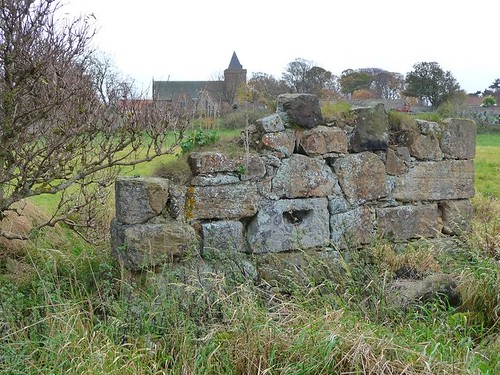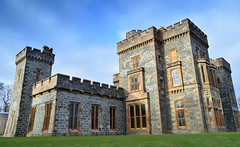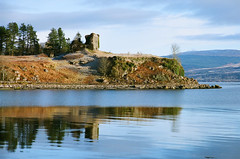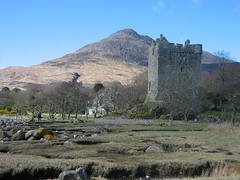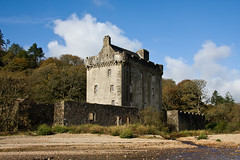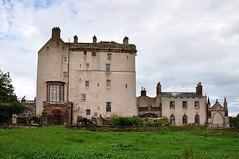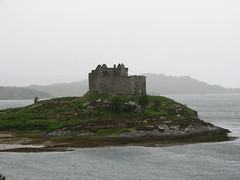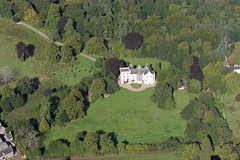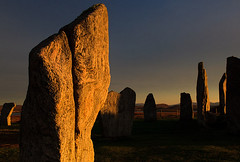Luffness House
Altered 16th C tower house with earlier buildings incorporated. Now owned by Earls of Hopetoun. Privately owned
The tower house and earlier buildings have had a varied history, stanbding as they do at a strategic point overlooking Aberlady Bay where ships could eaily land supplies.
There is evidence of a permanent Viking camp at this site.
It is believed that the original castle was a significant fortress, founded by the Gospatrick Earls of Dunbar and March. Its position allowed it to protect landings in Aberlady Bay, and Haddington, which lies a few miles inland. On the death of the crusading eighth earl, the property was presented to the church, so that a Carmelite friary was founded in the ground in 1293.
The French built a fort around the castle in 1549 as defence against the English, and it was successful in impeding them for a time in the War of the Rough Wooing. Mary of Guise ordered its destruction in 1552 as part of the peace arrangements, at the insistence of the Earl of Hertford.
After the Reformation Sir Patrick Hepburn of Waughton acquired the property, and the Hepburn Earls of Bothwell gained possession in due time. Mary, Queen of Scots, visited Luffness in the company of her third husband, James Hepburn, 4th Earl of Bothwell.
It was purchased for £8,350 in 1739 by the 1st Earl of Hopetoun, whose family owns it still. Luffness has been the private home of the Hope family for three hundred years. The addition of Victorian and Edwardian wings has made the building a substantial and traditional Scottish house. The walled fruit garden is unique, having been built by French prisoners of the Napoleonic wars, and is a haven of sunshine with all kinds of fruit, including figs, apricots, and peaches. The grounds are extensive and frequently roe deer flit across the fields between the copses
Opening Times
Private residence.


